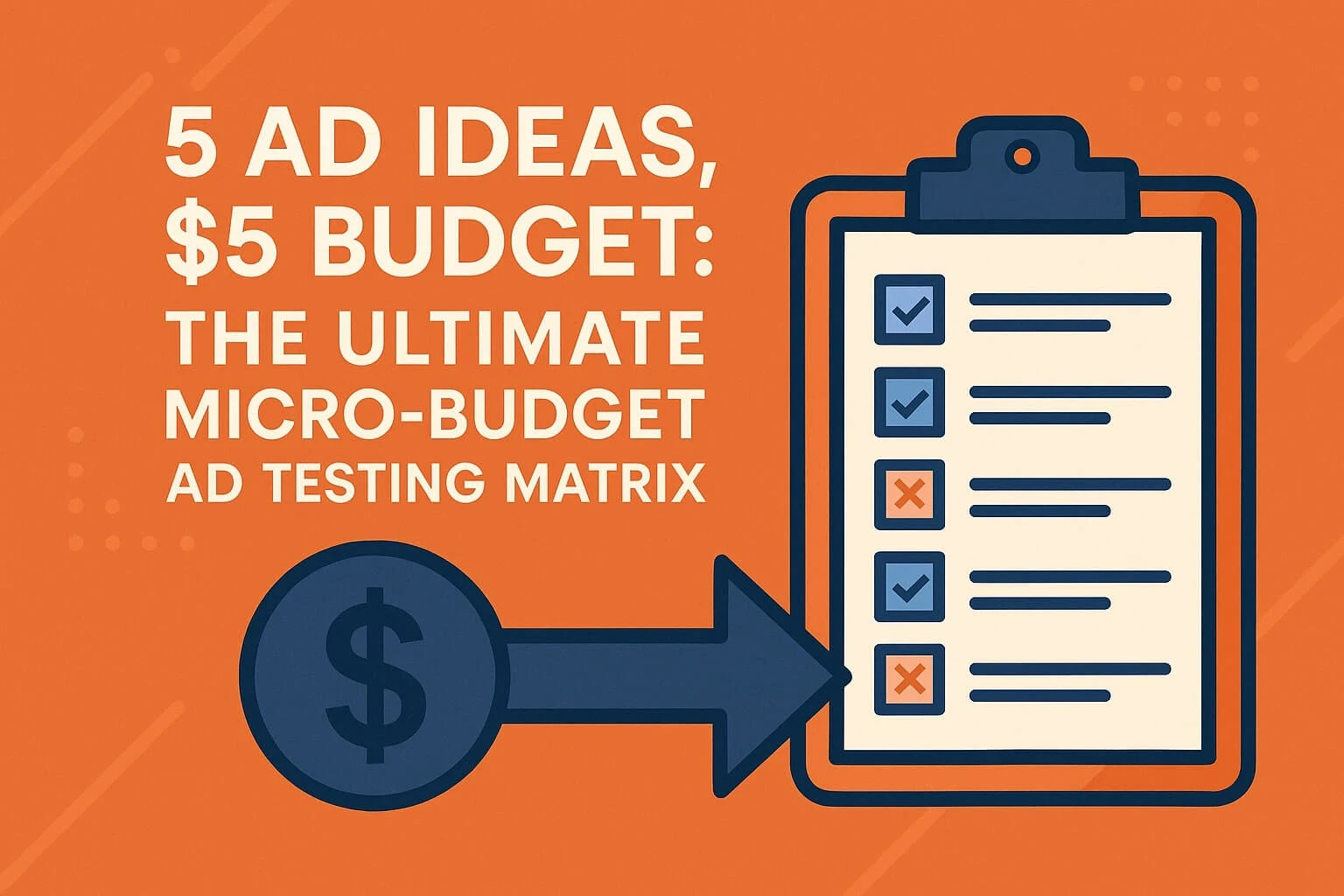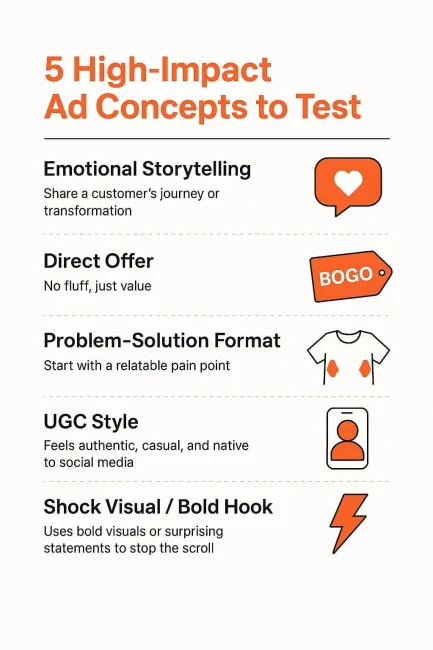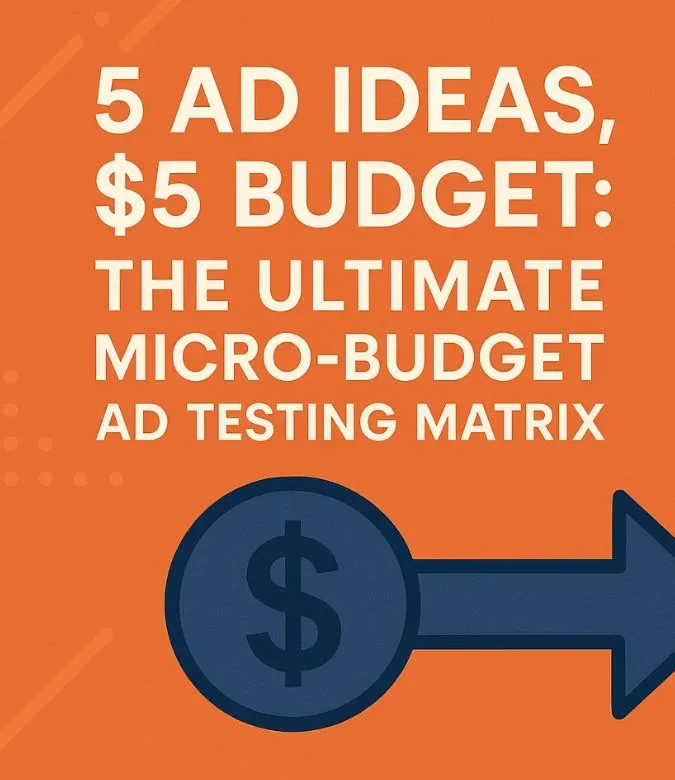
In a world where marketing budgets can spiral into the thousands, it’s easy to think:
“I need a lot of money to run effective ads.”
But what if that’s not true?
What if, with just $5, you could test 5 different ad concepts and figure out:
What your audience actually wants
Which creative direction to scale
And how to make smarter decisions without wasting money
Welcome to the Lean Ad Testing Matrix. It’s the low-cost, high-insight strategy for testing Facebook ads with clarity and confidence—even on a shoestring budget.
Step 1: Lock In a Single Audience
Imagine testing 5 ad concepts on 5 completely different audience segments.
Now ask yourself: if one performs poorly, how will you know whether the issue was the message or the audience?
This is a common mistake that ruins test results. So here’s rule #1:
👉 Keep your audience fixed.
By targeting the same group across all ad sets, you remove one major variable and ensure you’re testing the concept, not the crowd.
How to define your fixed audience:
Location: Focus on your primary market (e.g., United States or a specific city)
Age Range: Based on your buyer persona (e.g., 22–35)
Gender: Select “All” unless your product is gender-specific
Interest Targeting: Keep it broad to give Facebook room to optimize (e.g., “Online Shopping,” “Home Decor,” “Fitness Enthusiasts”)
This consistency ensures the results you get reflect the strength of each creative—not the quirks of different audiences.
Step 2: Create 5 Ad Sets – Each With a Unique Concept
Once your audience is locked, it’s time to test the fun stuff: creative angles.
Your goal isn’t to find the perfect ad in one shot—it’s to quickly discover which type of message resonates with your market.
Split your $5 into 5 ad sets, each getting $1 and showcasing a different concept.
5 High-Impact Ad Concepts to Test:

Emotional Storytelling
Share a customer’s journey or transformation
Builds trust and emotional connection
“I was about to quit my business… then this changed everything.”
Direct Offer
No fluff, just value
Great for price-sensitive buyers
“Buy 1 Get 1 Free – This Week Only!”
Problem–Solution Format
Start with a relatable pain point
Follow up with your product as the solution
“Why do sweat stains ruin your shirts? Here’s how we fixed it.”
UGC Style
Feels authentic, casual, and native to social media
Shot on a phone, selfie-style or influencer demo
Works great for e-commerce and skincare, apparel, lifestyle brands
Shock Visual / Bold Hook
Uses bold visuals or surprising statements to stop the scroll
Think: eye-popping color, intense zooms, or “You won’t believe this…”
Structure:
Each ad set contains one concept only
Same audience, same objective, same $1 budget
The only variable? The ad content
This setup gives you clear, apples-to-apples data on which direction performs best.
Step 3: Use Manual Budget (ABO), Not Campaign Budget Optimization (CBO)
Here’s a critical tip most beginners miss:
If you use CBO (Campaign Budget Optimization), Facebook will automatically allocate your entire $5 across ad sets—but not evenly. It might dump $3 into one ad, ignore two others, and barely spend on the rest.
That’s a problem when you’re trying to compare creative performance fairly.
Instead, choose ABO (Ad Set Budget Optimization) so that each ad gets exactly $1.00.
Here’s how to set it up:
Campaign Type: Traffic or Engagement
Budget Type: Ad Set Budget (Manual)
Budget: $1 per ad set
Total: $5 across 5 ad sets
This setup ensures every concept gets its moment in the spotlight.
Step 4: Run for 24 Hours – Track the Right Metrics
After your ads have run for a day, don’t rush to check conversions.
Instead, focus on the early signals that show how well each ad captured attention.
Key Metrics to Watch:
CTR (Click-Through Rate):
Measures how compelling your ad is—high CTR = strong hook and relevance.CPC (Cost Per Click):
Indicates how efficiently you’re buying attention—lower is better.CPM (Cost Per 1,000 Impressions):
Shows your overall cost to reach people—can help diagnose inefficiency.Engagement (Likes, Comments, Shares):
Not always the best conversion predictor, but helpful in gauging emotional impact and virality.
🎯 A good-performing ad usually shows:
CTR over 1.5%
CPC under $0.50 (depends on industry, but good for micro-budget tests)
Solid engagement that matches your brand voice
Even without purchases, these data points are gold for refining your creative strategy.
Just like other pseudo-elements and pseudo-class selectors, :not() can be chained with other pseudon classes and pseudo-elements. For example, the following will add a “New!” word to list items that do not have a .old class name, using the ::after pseudo-element:
Why This Matrix Works
The beauty of the Lean Ad Testing Matrix is that it forces discipline and clarity.
Instead of guessing or endlessly tweaking a single ad, you:
✔️ Test multiple creative directions side by side
✔️ Spend less while learning more
✔️ Avoid costly misfires when it’s time to scale
It’s not about finding your unicorn ad overnight. It’s about creating a repeatable system for creative testing that fits any budget.
Final Notes: CTR ≠ Conversions

Let’s clear one thing up.
Just because an ad gets a ton of clicks doesn’t mean it will generate sales.
You might find that:
A meme ad gets huge engagement, but no purchases
A shock visual drives clicks, but poor product-page conversion
An emotional story performs modestly, but leads to real buyers
That’s okay.
This matrix helps you screen creative ideas quickly. Once you find your strongest ad, then you can retest with a stronger landing page, new offer, or larger budget to validate it at the conversion level.
Wrap-Up: Small Budget, Big Insights
If you’ve been holding back on Facebook ads because of budget fears—don’t.
You can absolutely learn what works with just $5.
Test smarter. Scale later.
The Lean Ad Testing Matrix makes it possible.


